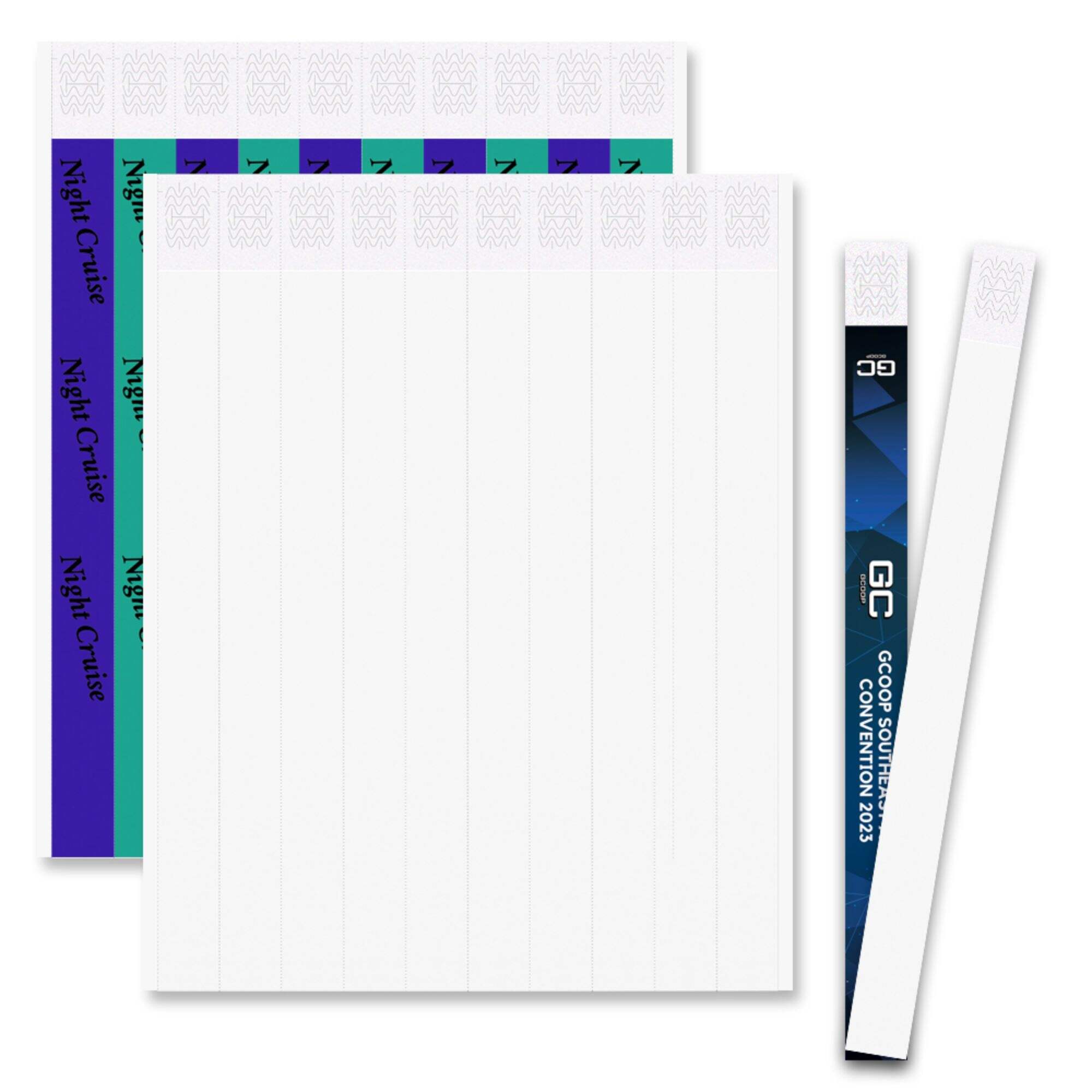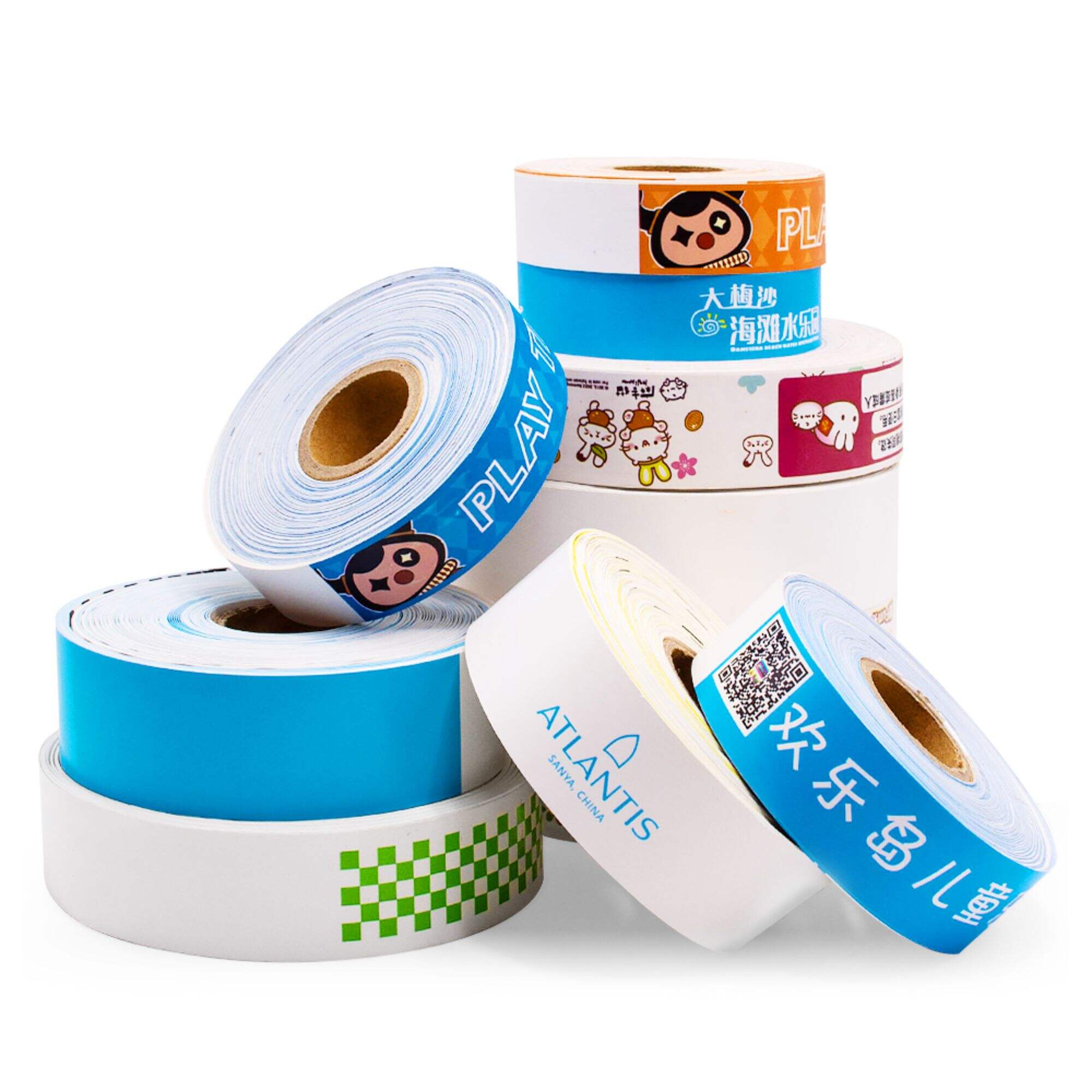Exploring the Durability and Applications of Plastic Wristbands
Material Composition and Durability of Plastic Wristbands
Key Factors Contributing to Longevity
The durability of plastic wristbands is heavily influenced by the materials used in their manufacture, notably polyethylene and polypropylene. These materials provide the necessary strength and flexibility that make wristbands both robust and comfortable to wear. The manufacturing processes, such as injection molding and heat sealing, further enhance their durability. Injection molding ensures uniformity and structural integrity, while heat sealing strengthens the joints and seams, reducing the potential for wear and tear. Additionally, the thickness and design of these wristbands are critical; thicker wristbands typically enjoy an enhanced resistance to damage and longevity. Industry reports often highlight that vinyl wristbands, due to their material properties and composition, tend to outlast their counterparts, showing a significant lifespan advantage.
Environmental Resistance Features
Plastic wristbands boast several environmental resistance features, making them suitable for diverse conditions. Notably, their waterproof nature is ideal for events that might encounter rain or humidity, ensuring that they stay intact and legible in wet conditions. Many plastic types also exhibit UV resistance, crucial for outdoor events where sun exposure could lead to fading or material degradation. Furthermore, their resistance to chemicals and sweat enhances both comfort and durability, making them suitable for environments like healthcare or fitness centers where wristbands are subjected to various exposures. Empirical research, as cited in environmental science studies, supports these claims, demonstrating that advanced plastic wristbands maintain functionality and appearance even under challenging environmental conditions.
Industrial and Event Applications of Plastic Wristbands
Use Cases in Healthcare and Hospitality
Plastic wristbands have become indispensable in healthcare settings for patient identification and tracking. They enable quick and accurate patient verification, reducing errors and enhancing safety practices. Additionally, in the hospitality sector, these wristbands streamline guest check-in and manage access control, thereby significantly enhancing the guest experience. Case studies have shown that implementing wristbands in hotels and hospitals improves operational efficiency by minimizing identity verification time and boosting security measures. Industry reports indicate a growing trend in the adoption of these wristbands in both sectors, driven by the demand for increased efficiency and safety protocols.
Plastic Wristbands for Large-Scale Events
Plastic wristbands play a vital role in large-scale events like festivals, concerts, and sporting events, primarily for identification and access control purposes. These wristbands allow for seamless entry management and enhance security through features like color-coding and customization. Personalizing wristbands can engage attendees by showcasing creativity and improving brand visibility. According to various event organizers, plastic wristbands are crucial in handling large crowds, making entry and participation more organized and manageable. The widespread usage of these wristbands is evident as organizers strive for efficiency and security, backed by event attendance statistics showing their effectiveness in crowd control and attendee management.
Innovative Plastic Wristband Solutions Enhancing Security and Comfort
Polyweave With Non-Wristband Straps: Breathable and Eco-Friendly
Polyweave wristbands are renowned for enhancing comfort through their breathable and soft texture against the skin. This feature ensures a comfortable experience even during extended wear, minimizing discomfort. Beyond comfort, Polyweave wristbands stand out as an eco-friendly choice. By utilizing natural and recycled fibers, these wristbands appeal to environmentally conscious consumers who prioritize sustainability in their purchasing decisions. Recent trends in the B2B sector show a marked increase in preference for eco-friendly products, driven by event organizers and manufacturers who acknowledge the growing demand for sustainable alternatives.
RFID Thermal Wristbands: Waterproof and Real-Time Printing
RFID wristbands leverage advanced technology to ensure secure access and real-time tracking, becoming indispensable for modern events. These wristbands offer real-time printing capabilities, dramatically improving logistical aspects like entry management and on-the-go information updates. Furthermore, their superior waterproofing allows them to function reliably across diverse environments, from bustling festivals to humid conditions. Noteworthy implementations, such as major music festivals, have exhibited significant logistical efficiencies and garnered positive attendee feedback due to these wristbands' robustness and adaptability.
Rolled Tyvek Wristbands: Tear-Resistant and Printer-Compatible
Tyvek wristbands, crafted from durable material known for tear-resistance, are ideally suited for outdoor events where longevity is crucial. The material's strong resistance to damage ensures these wristbands remain intact throughout the event, providing organizers reliability. Their compatibility with thermal transfer printers simplifies customization, allowing event coordinators to create tailored branding solutions with ease. Tyvek wristbands are increasingly popular across industries, particularly in managing large events, due to their affordability and reliability, as manufacturers report a steady increase in their usage.
Choosing Between Plastic and Alternative Wristband Materials
Plastic vs. Vinyl Wristbands: Durability Comparison
In comparing plastic vs. vinyl wristbands, both have distinct advantages that cater to different needs. Plastic wristbands are renowned for their affordability and an excellent balance of comfort and durability, making them an ideal option for medium-term events. Conversely, vinyl wristbands offer superior robustness, perfect for multi-day festivals due to their resistance to stretching and tearing. They provide better comfort with their soft texture, which prevents skin irritation. Studies and customer feedback typically favor vinyl for events requiring a more durable solution, whereas plastic is often preferred for shorter-term engagements due to its cost-effectiveness.
When to Opt for Tyvek or Fabric Options
Choosing between Tyvek and fabric wristbands depends significantly on the nature of your event. For cost-effective, single-day occasions like festivals, Tyvek wristbands are an unbeatable choice. Their affordability and security features make them suitable for managing large crowds. On the other hand, fabric wristbands shine in environments that demand a premium experience, such as VIP sections at high-profile events or multi-day festivals. Industry trends indicate an increasing preference for fabric wristbands due to their eco-friendliness and stylish appeal, ensuring comfort and aesthetic value for attendees.
By assessing the nature and duration of your event, you can make informed decisions that align with your budget and audience expectations. Whether you prioritize durability, cost-effectiveness, or luxury, there's a wristband option to suit your needs seamlessly.
 EN
EN
 AR
AR
 HR
HR
 CS
CS
 DA
DA
 NL
NL
 FI
FI
 FR
FR
 DE
DE
 EL
EL
 HI
HI
 IT
IT
 JA
JA
 KO
KO
 PL
PL
 PT
PT
 RU
RU
 ES
ES
 SV
SV
 TL
TL
 ID
ID
 SR
SR
 SK
SK
 SL
SL
 VI
VI
 HU
HU
 TH
TH
 TR
TR
 FA
FA
 AF
AF
 MS
MS
 IS
IS
 HY
HY
 BN
BN
 LO
LO
 LA
LA
 MN
MN
 MY
MY
 KK
KK
 UZ
UZ






